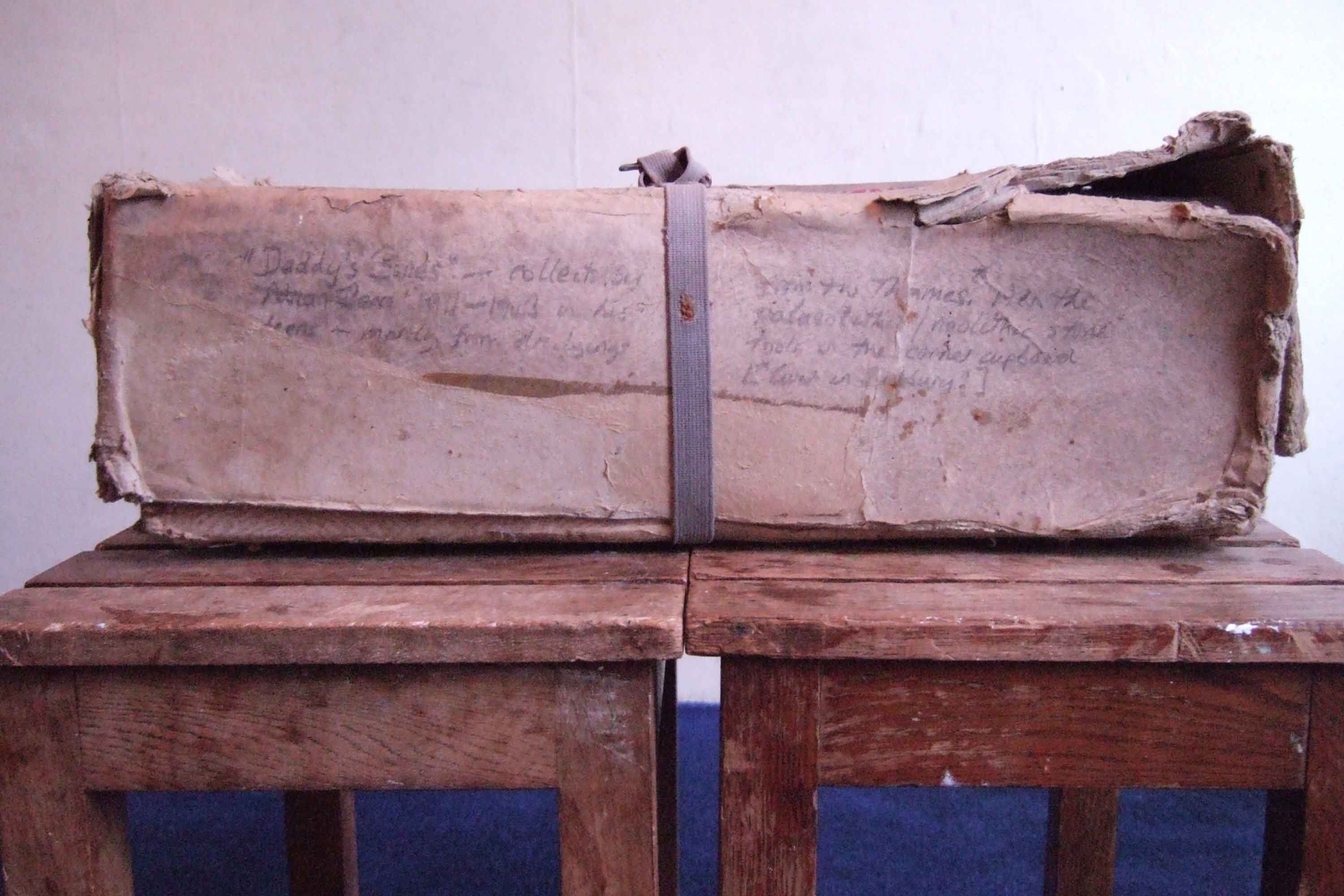A Box of Thames Mudlarking Finds collected over One Hundred Years Ago!

Imagine how it would feel to find a box of Thames mudlarking finds in the attic that has not been opened for almost a century! You can just imagine it can’t you?! An enticing and mysterious dusty box in a dark corner. What treasures might it contain? Well, something very similar happened to me recently and today I want to tell you about some mudlarking finds, rediscovered, over one hundred years after they were first found in the Thames mud.

Imagine if you will, London in the 1920s. A teenager, Adrian Beare, born in 1912 to Lennie and Dolly Beare, goes down onto the Thames foreshore in London and is captivated by the objects he sees lying there at low tide. He starts to collect them ; animal bones and teeth, pieces of pottery, clay pipe stems… the same kinds of thing that we pick up nowadays when we’re out on the foreshore. Adrian is particularly captivated by what looks like prehistoric tools and worked flints. He picks these up very carefully too and marvels at the fact that he is probably the first person to touch them in thousands of years. He treasures all of these finds, puts them in his pockets, takes them home, and places them all in a large box. One day he shuts that box for the last time. But it is passed down the generations and remains in his family to this day. Last year I was fortunate enough to meet Adrian’s grandchildren and great grand children and together we opened the box and I discovered the artefacts that Adrian, a mudlark in the 1920s, found!

It was incredible holding Adrian’s finds and looking closely at them. There is a significant amount of Roman and Iron Age pottery, including part of a Roman floor tile and a beautiful fragment of samian ware which is like Roman fine dining ware. The finds which really stood out for me though were the Neolithic and Mesolithic flint tools, made by people thousands of years ago. I was in awe of a mace axe head which would have taken days to make by a person back in Mesolithic times. There were also flint blades which would have been used to scrape and cut animal skins.

Even the box is an artefact! It’s an old laundry case, and on it you can see childlike writing which says “Daddy’s collection”, written by Adrian’s young son Tony back in the 1940s. Also written in pencil by Tony are the dates 1912 – 1943. I learned that these are Adrian’s life dates. Tragically, during the Second World War, Adrian signed up with the RAF Volunteer Reserves. On 7th July 1943 he was one of a crew of five on a Wellington Bomber. The plane crashed and all six men onboard died. Adrian left behind his wife and two sons.
Adrian died far too young but one of his legacies is this collection of Thames treasures. I’m so glad it has been kept in the family. It must have given comfort to his sons as they played museums with its contents. And years later, the memory of Adrian was evoked again as we sat together looking at his finds and imagining his mudlarking adventures on the Thames foreshore all those years ago.
To find out more about the contents of the box and about Adrian Beare himself, watch my YouTube video https://youtu.be/gMLgtrEOC_0
About Tideline Art
Meet Nicola White, mudlark and creator of Tideline Art. Nicola regularly posts videos to her YouTube channel, showcasing her incredible treasures and finds. Over the course of the next 12 months, Nicola will be sharing her fascinating stories and finds with us on the Muck Boot blog!
When I first moved to London over twenty years ago from Cornwall, I had no idea that the River Thames would open up such a fascinating and magical world, and that when the tide went out, its muddy banks would reveal to me a wealth of historical secrets and characters from the past. I was used to beachcombing on windswept beaches in Cornwall, but it never occurred to me that something similar might be possible in an urban setting such as London.
Follow Nicola White
Instagram – https://www.instagram.com/tidelineart/?hl=en
Facebook – https://www.facebook.com/NicolaWhiteTidelineArt/
YouTube – https://www.youtube.com/channel/UC2K7yEwPIcPaQT5FM78dpyw
More on Mudlarking
The Story of the Thames Pewter Mug
A Whale of a Time on the Thames
Related Product




























Leave a comment